Intel's Pentium M on the Desktop - A Viable Alternative?
by Anand Lal Shimpi on February 7, 2005 4:00 PM EST- Posted in
- CPUs
Overclocking to Save the Day?
Of course, the big question is - "What if you overclock it?"As you can expect, the Pentium M benefits greatly from being overclocked; not necessarily from the CPU being overclocked, but from the memory bus being overclocked. Unfortunately, as we mentioned before, the 855GME chipset and the two motherboards that we have based on it don't seem to want to overclock the memory bus too much, so we're left with somewhat nice performance gains from overclocking, but not ideal.
The problem with overclocking just the Pentium M is that it paints a skewed picture of reality - as comparing one overclocked processor to a ton of stock-clocked CPUs isn't really fair. But folks are always interested to see what an overclocked Pentium M can do, so we're here to show it off.
The beauty of the current Dothan based Pentium M CPUs is that they are 90nm chips, but without the heat issues of the Prescott based Pentium 4, meaning that they should overclock reasonably well. And overclock they do - our 2.0GHz sample easily hit 2.40GHz (133MHz x 18), and our 1.7GHz samples had no troubles getting up to 2.0GHz (one even hit 2.26GHz). We'd see bigger performance gains if we could bump up the memory clock beyond the 355MHz (to which we were limited), but that will most likely have to wait for new motherboards/chipsets.
Here are some abridged performance results with the overclocked Pentium M included:
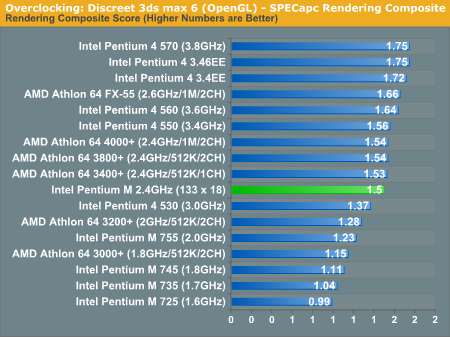
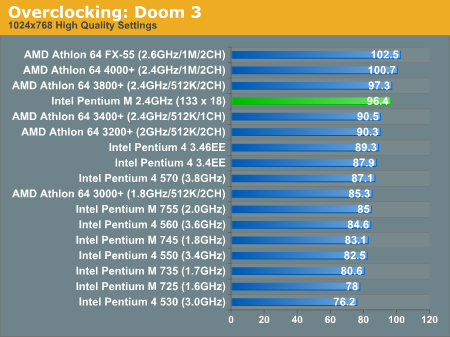
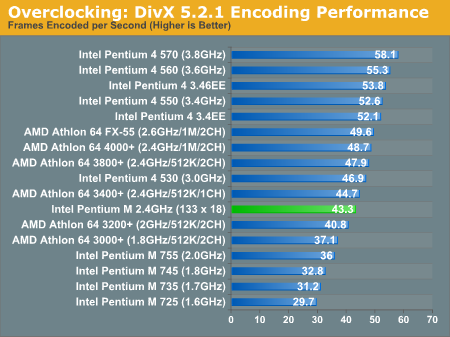
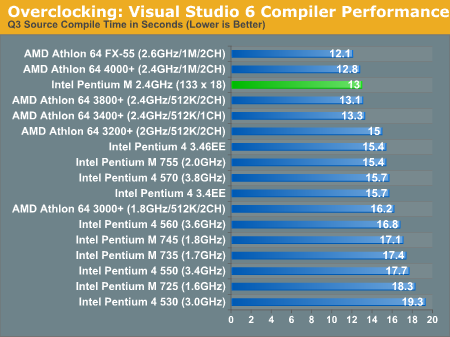
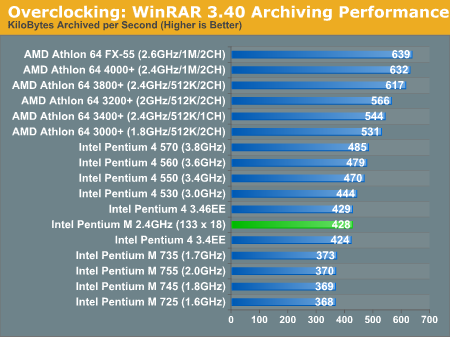
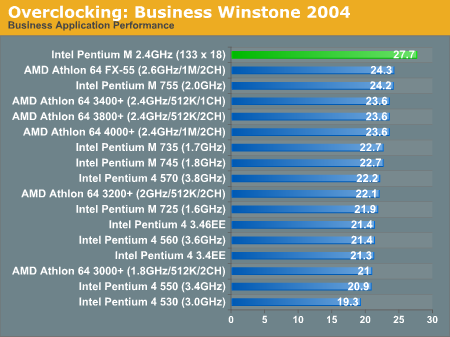
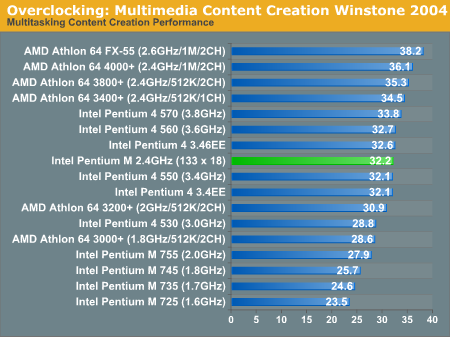
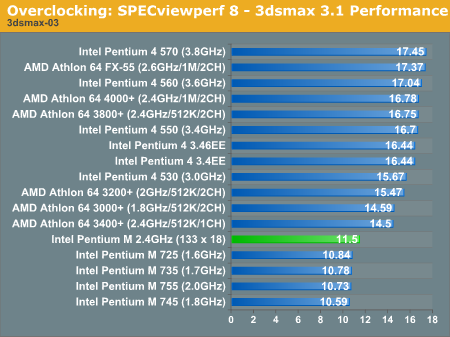
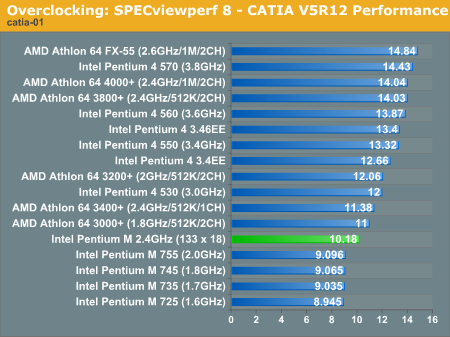

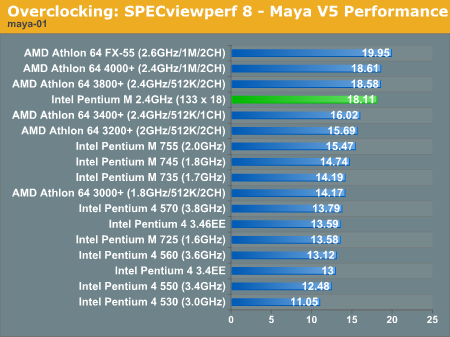
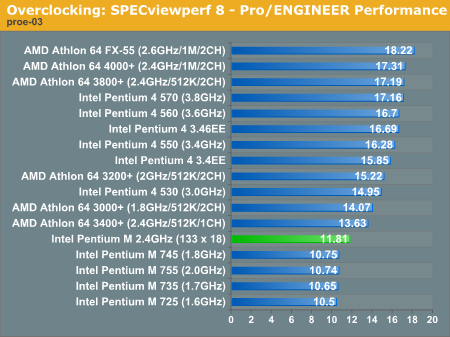
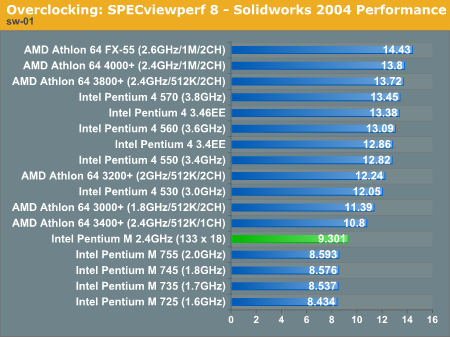
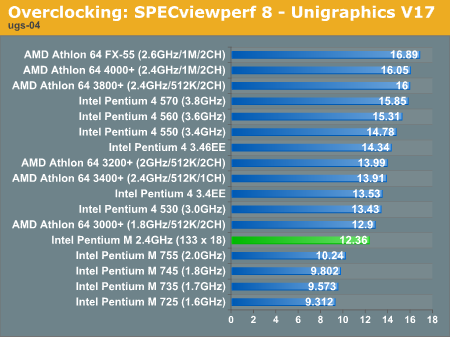










77 Comments
View All Comments
Jeff7181 - Monday, February 7, 2005 - link
Give the Dothan a speed bump and some dual channel DDR400 and stay out of it's way...MDme - Monday, February 7, 2005 - link
well, now we FINALLY have a comprehensive review of the P-M, it's strengths and weaknesses. While the P-M is good. the A64 is still better.Netopia - Monday, February 7, 2005 - link
Yeah, I was about to say the same as #3.Why did you go to the trouble to list what the AthlonXP system would have in it and then not actually test or reference it anywhere in the article?
I still have a bunch of AXP machines and regularly help others upgrade using XP-M's, so it would be interesting to see these at least included in reviews for a while.
CrystalBay - Monday, February 7, 2005 - link
Hi, I noticed in the testbed an AXP3200/NF2U400 but there are no charts with this setup.Beenthere - Monday, February 7, 2005 - link
It's a pipe dream for those who wish Intel had their act together. It's already confirmed M don't scale well and is not effective for HD computing. It's performance is really some place between Sempron and A64 but certainly not a suitable competitor to A64 nor FX. Just another Hail Mary for a defunct Intel.coldpower27 - Monday, February 7, 2005 - link
Hmm, an interesting review on the Pentium M to say the least. Though are 2-2-2-10 timings for the Pentium M the best for this architecture???0ldman79 - Wednesday, January 26, 2022 - link
It's interesting coming back and reading this after it's all settled, Core 2 seemed to be an evolution of the Pentium M line.Intel did hang the Netburst architecture up, though they added a lot of Netburst's integer design to Core 2 while designing Nehalem. AMD apparently believed that Intel was going to stick with Netburst and designed the FX line, while Intel went back to their earlier designs and lowered the clock speed, massively increased the IPC and parallelism and out-Phenom'ed the Phenom with Nehalem.
Back then Intel believed that Dennard scaling would continue and they'd have 10GHz chips, turns out wider and slower is better.